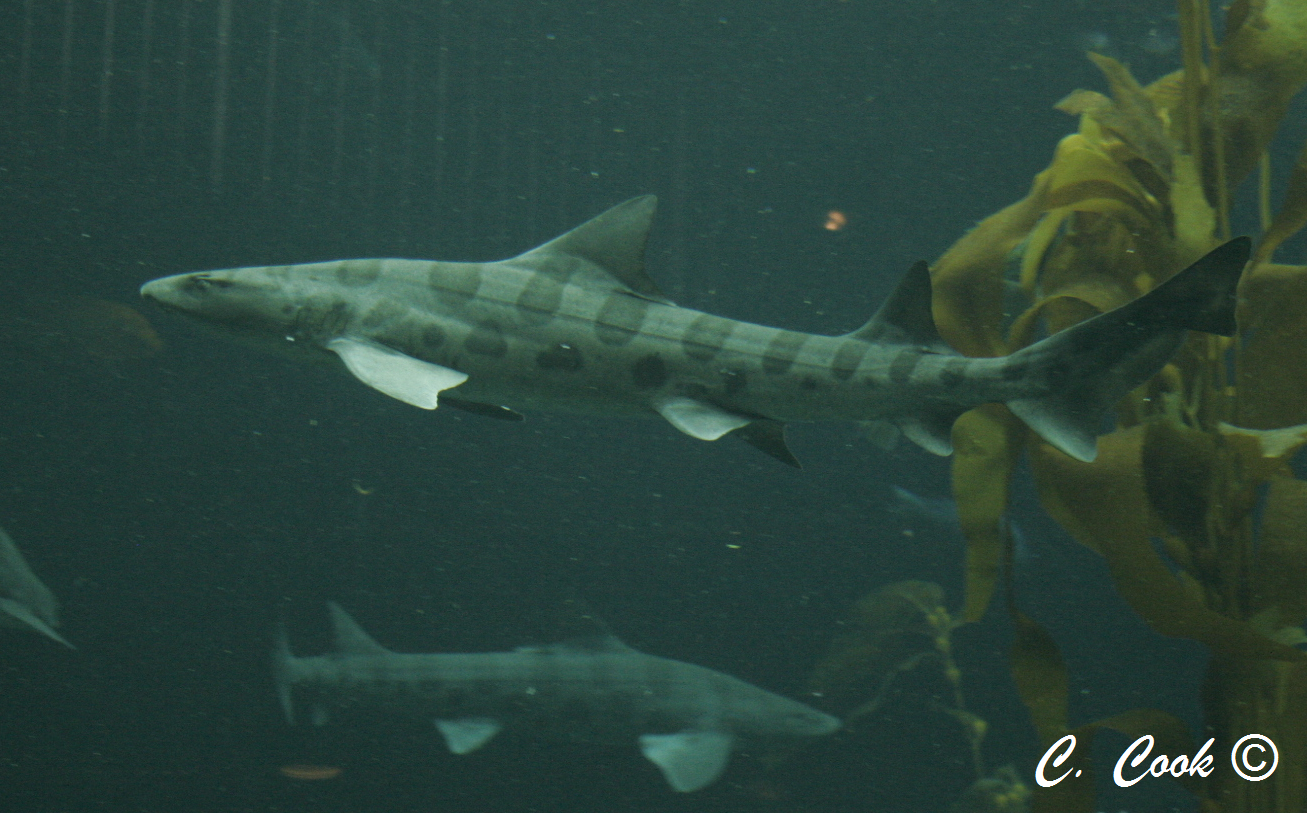 ><,> Fish of the Hayward Shoreline<'><
><,> Fish of the Hayward Shoreline<'>< ><,> Fish of the Hayward Shoreline<'><
><,> Fish of the Hayward Shoreline<'><[Home]
Salt marshes around the world serve an important role in the life cycle of many fishes. Serving as a nursery for many young fry the Hayward Shoreline and it's marshes play a critical part in the maintanence of many fish stocks. Whether big or small a large myriad of fish call the salt marsh home.
• Leopard Shark - Triakis semifasciata • (Girard)
Easily one of the Shoreline's most recognizable fish the Leopard Shark represents one of the top predators in the salt marsh. A stunning silver color with black saddle markings covers its body that can reach an average length of five feet (1.5 meters). As the shark ages the body color can turn from silvery gray to a beautiful bronze tone. Most often seen during an incoming high tide the shark comes to feed on small fish, small benthic and littoral animals, crabs, and the occanisal bat ray or another leopard shark. Truly an opportunistic feeder like many sharks it will feed on almost anything, and often these are the first fish that many anglers will land (see fishing restrictions). Having an array of sensory organs that aide their search for food leopard sharks utilize eyes that are adapted to the low light of the murky bay waters, an amazing sense of smell, and a special set of sensory organs called electroreceptors or the Ampullae of Lorenzini. |
 |
• Surf Perch - Cymatogaster aggregata (W. P. Gibbons) •
A very common fish within the San Francisco bay these fish prefer calm water habitats with places to seek refuge such as piers, pylons, rocks, and eelgrass beds. These fish will come into the channels of the salt marsh during an incoming tide to feed on small crabs, zooplankton, and copepods. Their preference for calm waters near the shore make them one of the more common fish caught along the Hayward Shoreline (see fishing restrictions). Generally silvery, with back dusky to greenish; middle of sides toward head are scales with groups of fine black dots on them, forming about eight longitudinal stripes; the stripes are often interrupted, especially in females, by three pale yellow, vertical bands; paired fins colorless; dorsal and caudal fins plain or dusky; anal fin usually colorless, sometimes with a yellow blotch toward the front (Morrow, J.E.). Breeding males may be almost solid black and develop fleshy lobes on both sides of anal fin (Morrow, J.E.). Females are live bearing fish meaning they do not lay eggs, but give birth to free swimming fry. The shoreline and its salt marsh habitat provide protective habitat for those young fry to develop into adult fish |
|
• Striped bass - Morone saxatilis (Walbaum) •
Introduced to the San Francisco Bay in 1879 from the Atlantic Ocean where the fish is native the Atlantic Striped Bass has well established itself in the bay and along the western pacific coast. Brought here orginally to establish a population for game fishing the "Stripers" are now a common fish to catch along the Shoreline (see fishing regulations). Regarded as a "good fight" they are also noted as being a tasty fish to consume. Easily discernable by longitual black stripes running the length of its silver body. Adults can grow to a maximum size of 200 cm (6.6 ft) and maximum scientifically recorded weight 57 kg (125 US pounds). Common mature size is 120 cm (3.9 ft). A member of the |
Morrow, J.E. 1980. The freshwater fishes of Alaska. University of. B.C. Animal Resources Ecology Library. 248p